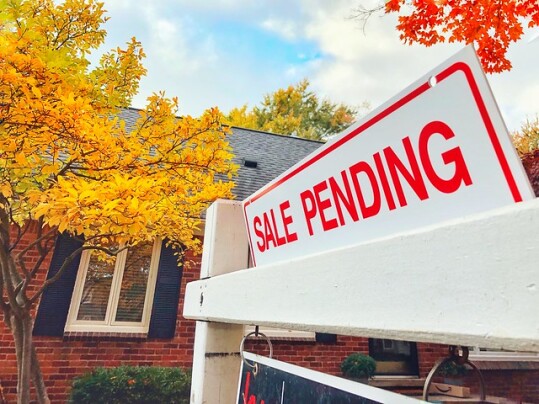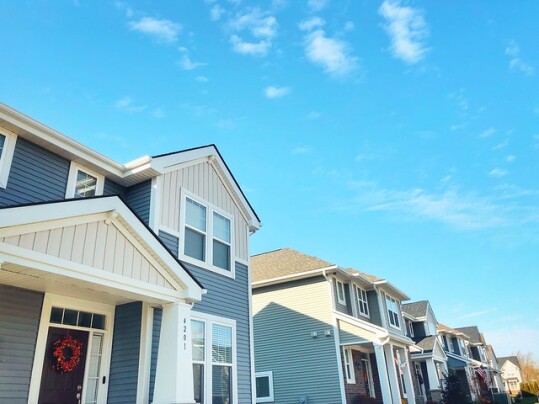A mortgage payment is a significant monthly expense. For most of us, it’ll rank among our biggest bills. So it’s no surprise affordability is always a top concern among prospective home buyers. Nobody wants to buy a home that’s going to cause them financial strain, stress, and worry. That’s why the most recent Purchase Applications Payment Index from the Mortgage Bankers Association is encouraging news. The index – which tracks the national median monthly payment – found payments down 1.8 percent in November, falling to $1,977 from $2,012 in October. Edward Seiler, MBA’s associate vice president of housing economics, says buyers may see further improvement in the coming months. “Slower home-price growth and a 26-basis-point decrease in mortgage rates led to a slight improvement in home buyer affordability in November,” Seiler said. “While the median purchase application increased by $2,444 to $297,444, the amount is more than $40,000 below the peak of $340,000 hit in February 2022. MBA expects both mortgage rates and home-price growth to moderate, which may encourage additional buyers to return to the housing market in the coming months.” (source)
Archive for December 2022
Median Mortgage Payment Down 2% In November
Pending Sales Fall But Rebound Is On The Way
When a home seller accepts an offer to buy, the closing process begins. During the closing process – which typically takes a few weeks – the home’s sale is considered pending. Pending home sales are a good indicator of future home sales, as most signed contracts lead to closed sales. Because of this, the National Association of Realtors tracks them each month. According to the most recent release, pending sales fell in November. Lawrence Yun, NAR’s chief economist, says higher mortgage rates slowed activity, but a rebound is on the way. “There are approximately two months of lag time between mortgage rates and home sales,” Yun said. “With mortgage rates falling throughout December, home buying activity should inevitably rebound in the coming months …” Year-over-year, contract signings were down in all regions, with the Midwest seeing the smallest drop and the West suffering the biggest decline from the year before. (source)
Affordability May Improve In New Year
ATTOM Data Solutions’ quarterly U.S. Home Affordability Report compares current conditions against historical averages in 581 counties across the country. The report determines affordability by calculating the amount of income an average wage earner would need to earn to comfortably afford homeownership expenses on a median-priced, single-family home. In the fourth quarter of 2022, affordability worsened. In fact, the report found typical homeownership expenses would require 32.3 percent of the average wage, that’s up from 23.8 percent last year at the same time. It’s also above what’s considered affordable by traditional lending standards. But while homeownership got more expensive in 2022, there may be relief on the way. Rick Sharga, executive vice president of market intelligence at ATTOM, says the new year may bring improvement. “There is a scenario where affordability improves as we move through 2023,” Sharga said. “Wage growth continues to be strong; home prices appear to have stabilized and are even going down slightly; and mortgage rates have peaked for this cycle, and could go down gradually next year. If those conditions remain in place, the affordability picture is much brighter for a lot of potential buyers.” (source)
Americans Remain Ready To Buy
Based on recent housing market headlines, you might assume Americans have put their home buying plans on hold. After all, the past few years have been volatile, with prices and demand skyrocketing before mortgage rates increased and slowed everything down. But while market numbers and trend graphs may have some Americans feeling hesitant, the majority of us remain sold on homeownership. In fact, in one recent survey, nearly 70 percent of respondents said they plan to buy a house or condo sometime in the next few years. And not only do they still plan to buy, they don’t mind if it costs them a little bit more. Forty-nine percent of participants said they’d be willing to pay over asking price for a house, if they’d previously had an offer rejected. Similarly, 45 percent said they’d pay more as long as the house checked off more than 75 percent of their wish list. In other words, Americans remain ready to buy. (source)
Majority Of Homes Still Sell In Under A Month
The housing market has definitely slowed this year. But while the home buying frenzy of 2021 has passed, that doesn’t mean good homes are sitting on the market unsold. In fact, the majority of homes sold in November were on the market less than a month, with the typical property on the market just 24 days – up from 18 days one year earlier. In other words, the still lower-than-normal number of homes for sale means good listings continue to sell relatively quickly, even as home sales overall have slowed. Lawrence Yun, NAR’s chief economist, says the market may be thawing. “The market may be thawing since mortgage rates have fallen for five straight weeks,” Yun added. “The average monthly mortgage payment is now almost $200 less than it was several weeks ago when interest rates reached their peak for this year.” Still, November sales were down from the month before, with sales of existing homes falling 7.7 percent from October. (source)
Rates Now At Lowest Level Since September
According to the Mortgage Bankers Association’s Weekly Applications Survey, average mortgage rates fell last week from the week before. Rates were down across all loan categories, including 30-year fixed-rate loans with both conforming and jumbo balances, loans backed by the Federal Housing Administration, 15-year fixed-rate loans, and 5/1 ARMs. Mike Fratantoni, MBA’s senior vice president and chief economist, says rates are now at a three-month low. “The Federal Reserve raised its short-term rate target last week, but longer-term rates, including mortgage rates, declined for the week, with the 30-year conforming rate reaching … its lowest level since September,” he said. Fratantoni believes mortgage rates will continue to trend downward, with buyers becoming more active during the second half of next year. The MBA’s weekly survey has been conducted since 1990 and covers 75 percent of all retail residential mortgage applications. (source)
What Will The Market Will Look Like In 2023?
Traditionally, the end of the year is the time when prognosticator and forecasters release their predictions for the year ahead. Fannie Mae’s Economic and Strategic Research Group is no different. The group’s most recent release details what they believe awaits the economy and housing market in 2023. So what do they expect? Well, for starters, they’ve raised their expectations for home sales next year – though they still believe sales will fall from 2022. Among the reasons they think there will be fewer sales in 2023 is the fact that most homeowners have a mortgage rate lower than current rates and will likely be reluctant to move until rates are more favorable. Beyond that, Fannie Mae believes a slower economy will keep housing market activity muted next year. “We expect housing to continue to slow, even though mortgage rates have come down recently,” Doug Duncan, Fannie Mae’s senior vice president and chief economist said. “Home purchases remain unaffordable for many due to the rapid rise in rates over the last year and the fact that house prices, though certainly slowing and in some places declining, remain elevated compared to pre-pandemic levels.” (source)







